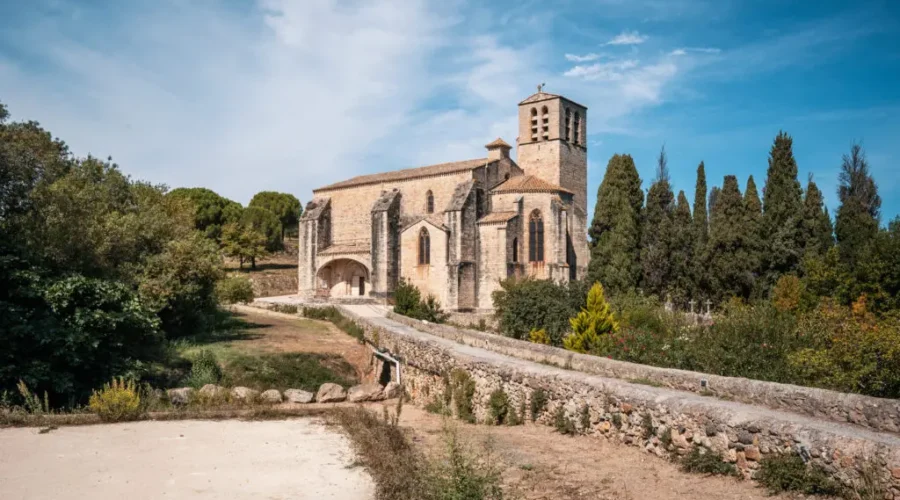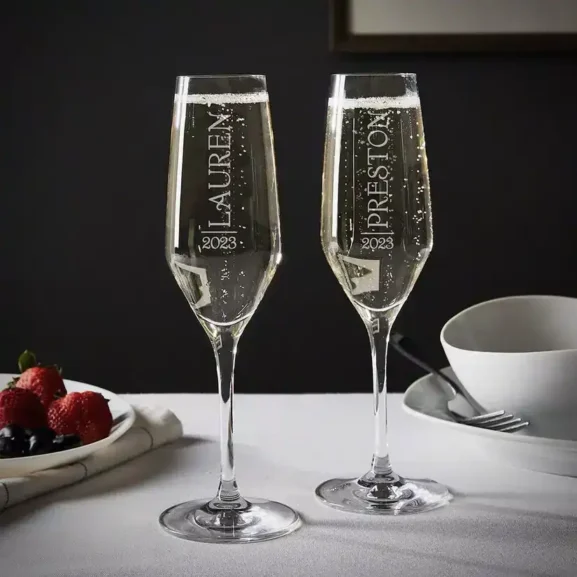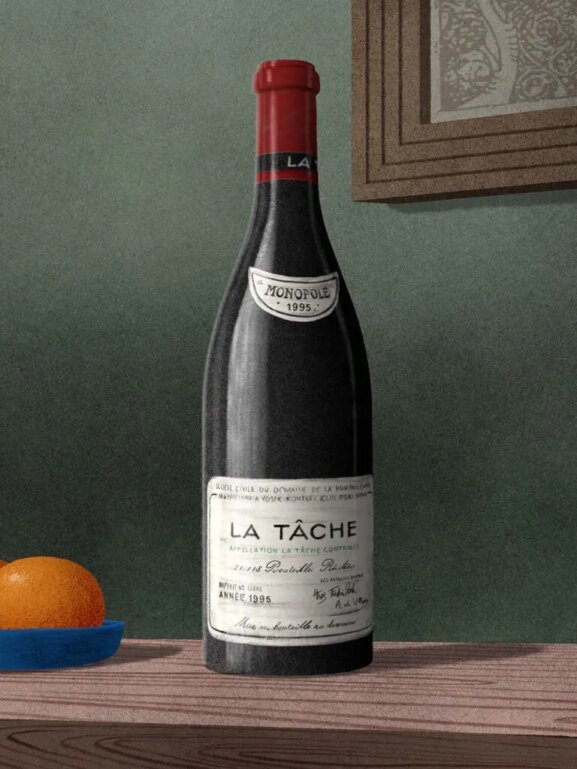Languedoc AOP: Where France’s Sun, Sea, and Soil Meet in the Glass
In partnership with Languedoc AOP
Stretching from the sandy shores of the Mediterranean Sea to dramatic mountain peaks perched above ancient villages, Languedoc AOP has quickly become one of France’s most dynamic appellations. Born in 2007 from the enlargement of the former Coteaux du Languedoc, the appellation now encompasses 10 distinct zones, each with its own terroir and style that together express the rich identity of the Languedoc.
The Romans recognized the optimal combination of sunshine, sea breeze, and structured soils more than 2,000 years ago, and while the broader Languedoc vineyard became France’s wine workhorse in the centuries that followed, today’s Languedoc AOP doesn’t dwell in the past. Quality was exalted over quantity decades ago in this land of constant innovation, of globe-inspiring sustainability, of exploring terroir down to the hectare. There’s freedom to experiment, a communal concern for the planet, and honest examinations of what works best where.
That makes Languedoc AOP a living showcase of wine as it was, as it is, and as it should be. Spanning more than 24,000 acres from the monument-filled ancient Roman city of Nîmes all the way to the Spanish border, the region is framed by the Cévennes mountain range and the Montagne Noire. Descending from these peaks are bucolic hillside vineyards that gradually flow toward the coast, where grapes grow within view of the Mediterranean Sea.
Today, Languedoc AOP is considered one of the most environmentally aware regions of France. Roughly one-third of its vineyards are covered by an environmental designation, including about 15 percent that are certified organic.
So come take a sip, because we’ve got it all: refreshing rosés and chalky whites to bold, nuanced reds that are both fresh, balanced, and ageworthy.
// Create the element
var script_68ed42ef0d619 = document.createElement(“script”);
script_68ed42ef0d619.innerHTML = `
window.googletag = window.googletag || {cmd: []};
googletag.cmd.push(function() {
var adType = “leaderboard”;
var mapping;
var lbmapping = googletag.sizeMapping()
.addSize([1024, 0], [[970, 250], [970, 90], [1, 1], [728, 90]])
.addSize([728, 0], [[728, 90], [1, 1]])
.addSize([320, 0], [[1, 1], [300, 50], [300, 100], [320, 50], [320, 100]])
.addSize([0, 0], [[1, 1], [320, 50]])
.build();; // Size mapping for leaderboard ads
var medrecmapping = googletag.sizeMapping()
.addSize([1024, 0], [[300, 600],[300, 250]])
.addSize([728, 0], [300, 250])
.addSize([320, 0], [[1, 1],[300, 250]])
.addSize([0, 0], [[1, 1], [300, 250]])
.build(); // Size mapping for med rectengle ads
if(‘/39808611/article_page/article_leaderboard_1’ == ‘/39808611/article_page/article_leaderboard_1’
|| ‘/39808611/article_page/article_leaderboard_1’ == ‘/39808611/article_page/article_leaderboard_2’
|| ‘/39808611/article_page/article_leaderboard_1’ == ‘/39808611/article_page/article_leaderboard_3’) {
mapping = googletag.sizeMapping()
.addSize([1920, 0], [[728, 90]]) // >= 1920px
.addSize([1440, 0], [[728, 90]]) // 1440px-1919px
.addSize([730, 0], [[300, 250]]) // 730px-1439px
.addSize([0, 0], [[320, 100], [320, 50], [300, 100], [300, 50], [300, 250]]) // Up to 729px
.build();
} else {
mapping = adType == ‘leaderboard’ ? lbmapping : medrecmapping;
}
googletag.defineSlot(‘/39808611/article_page/article_leaderboard_1’, [],
‘div-gpt-ad-68ed42ef0d619’).addService(googletag.pubads()).defineSizeMapping(mapping);
googletag.pubads().enableSingleRequest();
googletag.pubads().collapseEmptyDivs();
googletag.display(‘div-gpt-ad-68ed42ef0d619’);
});
`;
// Append the script to the body
document.body.appendChild(script_68ed42ef0d619);

ROSÉ
Rosé is the superstar of the appellation, responsible for 50 percent of production. Though the landscape is famed for producing some of the world’s most prestigious rosés, the strength of Languedoc AOP lies in its accessibility. Typically pale in color, these wines boast a refreshing, zesty profile, perfect for sipping poolside or on the beach.
Most compelling is their persistent acidity, thanks to the ocean breeze, and remarkable minerality, as the Languedoc’s ancient soils impart a chalky structure to these easygoing wines.
REDS
Red wine thrives in Languedoc AOP, where 300 days of sunshine ensure ripeness as steady, dry breezes from both the Mediterranean Sea and the Atlantic Ocean preserve freshness. There’s a fascinating range of soil types, from schist, sandstone, and limestone down to alluvial sand and volcanic basalt. Even more dramatic is how much the elevation of the region shifts, and how distinctive wines from the mountains can be from grapes grown along the coast.
The savory stars of the appellation’s reds are Grenache, Syrah and Mourvèdre, which carry ripe fruit, spice, and structure into the bottle. But 10 more varieties are also allowed in blends, including Counoise, Grenache Gris, and Terret Noir, which add vibrancy and aromatic lift often relied upon for adding freshness.
The wines can be meaty and bold, but today just as often they are lighter, juicy, and approachable — always cut with acidity and an earthy minerality that keeps them balanced and drinkable, while still allowing the more structured expressions to age gracefully.
BLANCS
Though only 10 percent of production, Languedoc AOP’s white wines are thrilling, and poised to break onto the global stage as an underappreciated gem. Coming from the more mountainous corners of the region are chalky, tropical-hinting blends of Grenache Blanc, Marsanne, Viognier, and Roussanne.
Closer to the Mediterranean Sea grow varieties that benefit from constant maritime influence. Picpoul is racy and electric, tasting of sea spray, while Bourboulenc is layered in floral elements from nose to palate.
There is a range of lesser-known varieties as well. Vermentino produces citrusy, textural wines, while Clairette Blanche can be made into almost any style, from delicate to rich. Even more obscure are ancient varieties like the apple-laced Mauzac and the rounded melon flavors of Carignan Blanc that really can’t be found anywhere else.
// Create the element
var script_68ed42ef0dc71 = document.createElement(“script”);
script_68ed42ef0dc71.innerHTML = `
window.googletag = window.googletag || {cmd: []};
googletag.cmd.push(function() {
var adType = “leaderboard”;
var mapping;
var lbmapping = googletag.sizeMapping()
.addSize([1024, 0], [[970, 250], [970, 90], [1, 1], [728, 90]])
.addSize([728, 0], [[728, 90], [1, 1]])
.addSize([320, 0], [[1, 1], [300, 50], [300, 100], [320, 50], [320, 100]])
.addSize([0, 0], [[1, 1], [320, 50]])
.build();; // Size mapping for leaderboard ads
var medrecmapping = googletag.sizeMapping()
.addSize([1024, 0], [[300, 600],[300, 250]])
.addSize([728, 0], [300, 250])
.addSize([320, 0], [[1, 1],[300, 250]])
.addSize([0, 0], [[1, 1], [300, 250]])
.build(); // Size mapping for med rectengle ads
if(‘/39808611/article_page/article_leaderboard_1’ == ‘/39808611/article_page/article_leaderboard_1’
|| ‘/39808611/article_page/article_leaderboard_1’ == ‘/39808611/article_page/article_leaderboard_2’
|| ‘/39808611/article_page/article_leaderboard_1’ == ‘/39808611/article_page/article_leaderboard_3’) {
mapping = googletag.sizeMapping()
.addSize([1920, 0], [[728, 90]]) // >= 1920px
.addSize([1440, 0], [[728, 90]]) // 1440px-1919px
.addSize([730, 0], [[300, 250]]) // 730px-1439px
.addSize([0, 0], [[320, 100], [320, 50], [300, 100], [300, 50], [300, 250]]) // Up to 729px
.build();
} else {
mapping = adType == ‘leaderboard’ ? lbmapping : medrecmapping;
}
googletag.defineSlot(‘/39808611/article_page/article_leaderboard_1’, [],
‘div-gpt-ad-68ed42ef0dc71’).addService(googletag.pubads()).defineSizeMapping(mapping);
googletag.pubads().enableSingleRequest();
googletag.pubads().collapseEmptyDivs();
googletag.display(‘div-gpt-ad-68ed42ef0dc71’);
});
`;
// Append the script to the body
document.body.appendChild(script_68ed42ef0dc71);




// Create the element
var script_68ed42ef0e1a6 = document.createElement(“script”);
script_68ed42ef0e1a6.innerHTML = `
window.googletag = window.googletag || {cmd: []};
googletag.cmd.push(function() {
var adType = “leaderboard”;
var mapping;
var lbmapping = googletag.sizeMapping()
.addSize([1024, 0], [[970, 250], [970, 90], [1, 1], [728, 90]])
.addSize([728, 0], [[728, 90], [1, 1]])
.addSize([320, 0], [[1, 1], [300, 50], [300, 100], [320, 50], [320, 100]])
.addSize([0, 0], [[1, 1], [320, 50]])
.build();; // Size mapping for leaderboard ads
var medrecmapping = googletag.sizeMapping()
.addSize([1024, 0], [[300, 600],[300, 250]])
.addSize([728, 0], [300, 250])
.addSize([320, 0], [[1, 1],[300, 250]])
.addSize([0, 0], [[1, 1], [300, 250]])
.build(); // Size mapping for med rectengle ads
if(‘/39808611/article_page/article_leaderboard_1’ == ‘/39808611/article_page/article_leaderboard_1’
|| ‘/39808611/article_page/article_leaderboard_1’ == ‘/39808611/article_page/article_leaderboard_2’
|| ‘/39808611/article_page/article_leaderboard_1’ == ‘/39808611/article_page/article_leaderboard_3’) {
mapping = googletag.sizeMapping()
.addSize([1920, 0], [[728, 90]]) // >= 1920px
.addSize([1440, 0], [[728, 90]]) // 1440px-1919px
.addSize([730, 0], [[300, 250]]) // 730px-1439px
.addSize([0, 0], [[320, 100], [320, 50], [300, 100], [300, 50], [300, 250]]) // Up to 729px
.build();
} else {
mapping = adType == ‘leaderboard’ ? lbmapping : medrecmapping;
}
googletag.defineSlot(‘/39808611/article_page/article_leaderboard_1’, [],
‘div-gpt-ad-68ed42ef0e1a6’).addService(googletag.pubads()).defineSizeMapping(mapping);
googletag.pubads().enableSingleRequest();
googletag.pubads().collapseEmptyDivs();
googletag.display(‘div-gpt-ad-68ed42ef0e1a6’);
});
`;
// Append the script to the body
document.body.appendChild(script_68ed42ef0e1a6);
The post Languedoc AOP: Where France’s Sun, Sea, and Soil Meet in the Glass appeared first on Wine Enthusiast.


